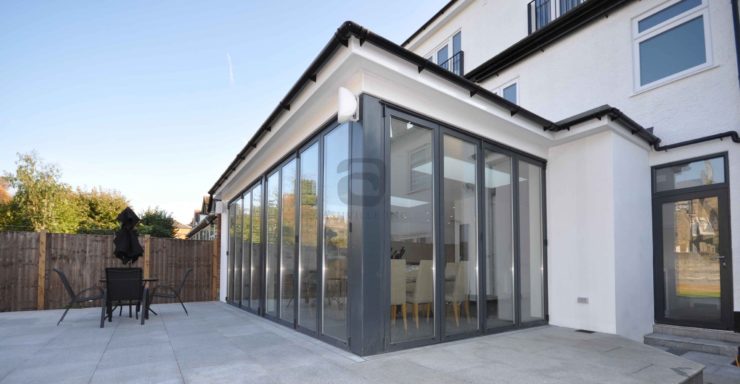
Your Guide to Planning Glass Extensions
There is no doubt that glass extensions are beautiful things, but on the other side, it can be challenging to create. This type of extension requires a high level of creativity, coordination, and precision.
What You Need to Know About Planning Rules
You need to submit an application for planning permission before extending your home. Permitted development can be subjective when it comes to glass extensions. Hence, it is essential to apply for a lawful development certificate from the local authority. If you want to ask for
planning permission, then you must read the guidance from the local authority.
You also need to keep in mind that the requirements for planning permission can vary from one region to another. We will advise you to apply for a lawful development certificate even if you do not need planning permission so that you can have proof in the future. Local authorities often
allow such extensions.
Building Regulations
It is challenging to comply with building regulations. The reason is that large areas of glazing can conflict with these regulations. Furthermore, you need to adhere to the energy efficiency of the extension. However, some rules allow you to use an alternative method in compliance with the regulations. One of the ways to achieve this is by increasing the thermal resistance of exposed elements, such as roof, walls, and floor. If it is not enough for the glass extensions, then you need to use high-performance glass.
Another way is to carry out a Standard Assessment Procedure. You need to make sure that the CO2 emission from the extension is no more than a conventional extension or home of the same size. You can quickly achieve this by making improvements to your existing house by insulating the loft or by installing an efficient boiler or hot-water system. If one of the options does not work for you, then you can combine them to comply with the regulations.
Pros and Cons of Glazed Roof
Well, adding a glass roof can naturally illuminate the space and add a modern feel to it. However, it is challenging to control the amount of sunlight entering the room. So, it is essential to decide the room orientation accordingly before the designing process. The glass can let more light inside the room than vertical glazing- so keep this in mind. To cope with this situation, consider a north-facing glass extension.
In most of the situations, we advise our clients to consider a reliable roof, which is well-insulated and can conceal structure, services, and lighting.
How to Ensure Privacy
You can add blinds within the glazing units, which you can control automatically or manually. You can add these blinds or curtains inside the glazing, so when you open, nothing is visible inside. However, privacy can be a significant issue at night, because the reflections make it difficult to see through glazing. TO cope with this issue, you can consider planting. However, make sure that it does not block the view.
How to Keep Glass Extensions Ventilated?
There are various ways to keep the glass extension well-ventilated. But as an architectural services provider, we believe in using natural methods where possible.
We will recommend you to ensure that the roof space has acoustic and thermal ventilation. If you have openable roof lights, then it can cause cross ventilation (The colder air can come inside, and warmer air can vent out at a higher level. Because when the air becomes warms, it rises. So, consider trickle ventilators inside the frame of your glazing. It can be an effective way to ventilate the space without opening a door.
How to Keep Glass Extensions Warm?
If the underfloor heating is not working properly, then glass extension can become chilly on cold days. Hence, it is essential to consider the position of your thermostats. You also need to consider both underfloor and trench heating depending on the size of the space. Another thing that you need to consider is the quality of glazing. If you are using high-performance glazing,
then the heat loss will be low.
Do Their Other Ways to Regulate Light?
Nowadays, there is glass available with different levels of solar and thermal performance. Modern double-glazed glass can limit heat loss. They have argon-filled cavities, which can limit solar gain. However, these coatings can affect the colour and transparency of the glass. Have you heard about the fritted glass which has an opaque print? Well, this type of glass can reduce solar gain. However, blinds or curtains are the most cost-effective solution right now.
How to Light Glass Extensions
Incorporating light in a glass extension is often tricky compared to a conventional glazed extension. You can also solve the problem of lighting with roof lights. You can consider LED, but make sure that the strips are not reflected in the glass at night.





